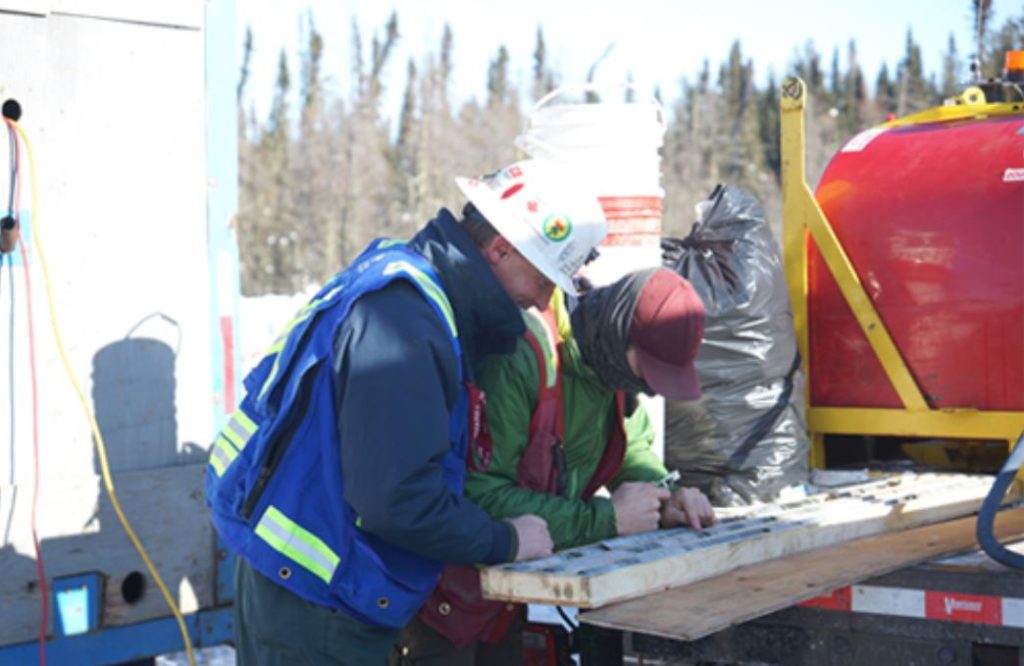CanAlaska drills 0.8% nickel over 20 metres at Manibridge, Manitoba

CanAlaska Uranium Ltd.’s [CVV-TSXV; CVVUF-OTCQX; DH7N-FSE] assay results in the first 14 reported holes from the summer 2022 drill program have confirmed the presence of nickel-copper-cobalt mineralization on the Manibridge project. The continuing drill program is focused along the northern extension of the past-producing Manibridge Nickel Mine, located in the Thompson Nickel Belt, Manitoba, which produced 1.3 million tonnes averaging 2.55% nickel and 0.27% copper from 1971 to 1977.
Highlights include drill hole MNB014 that intersected 0.8% nickel over 20.0 metres, from 268.5 metres, which includes multiple metre-scale high-grade intervals.
MNB021, which intersected 0.61% nickel over 25.0 metres, from 287.5 metres, which includes 1.42% nickel over 5.0 metres from 307.5 metres.
MNB020, which intersected 0.6% nickel over 19.5 metres, from 253.5 metres, which includes 1.26% nickel over 4.0 metres from 261.5 metres.
The sulphide mineralization, which contains nickel, copper, and trace cobalt occurs as either disseminations within the mafic to ultramafic host rocks, remobilizations along foliation and shears, vein-hosted, net-textured, or brecciated. Sulphide-mineralization from the 2022 summer drilling program is shallow, with true vertical depth to mineralization ranging from 100 metres to 350 metres below the surface.
The continuing drill program is planned for 10,000 metres of diamond drilling in approximately 33 drill holes. During the first half of the program, operated between June 6 and July 28, 2022, a total of 5,331 metres were completed in 16 drill holes with 3 abandoned drill holes.
The completed drill hole collar locations were within 300 to 600 metres of the historic mine workings. The remaining planned drill holes will focus within 200 to 350 metres of the historic mine workings. The average planned drill hole depths are between 225 and 400 metres and all drill holes will be inclined between -45 and -85 degrees.
CanAlaska currently holds a 30% interest in the project, with the remaining 70% held by the operator, Metal Energy Corp. [MERG-TSXV; MEEEF-OTCQB], which has provided the funding for the drill program.
Assay results for drill holes MNB024 and MNB025 are still pending.
CanAlaska CEO Cory Belyk commented: “As this drilling program continues it is very encouraging to have nickel mineralization of significant width and grade continue to be intersected. This work is highlighting the likely untapped potential of the Thompson Nickel Belt to host additional resources of class 1 nickel mineralization which the world needs in order to help provide clean and affordable electricity to society. Battery storage will become increasingly important as part of this electrification and Canalaska shareholders are well positioned to participate in this nickel market through our landholdings in Manitoba.”
Complete drill results are tabled in the original press release.
CanAlaska Uranium holds interests in approximately 300,000 hectares (750,000 acres), in Canada’s Athabasca Basin, northern Saskatchewan. Canalaska is currently working with Cameco and Denison at two of the company’s properties in the Eastern Athabasca Basin.
